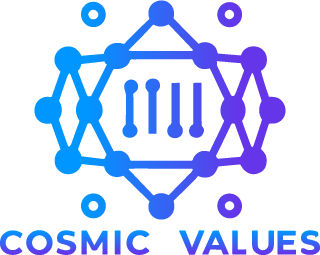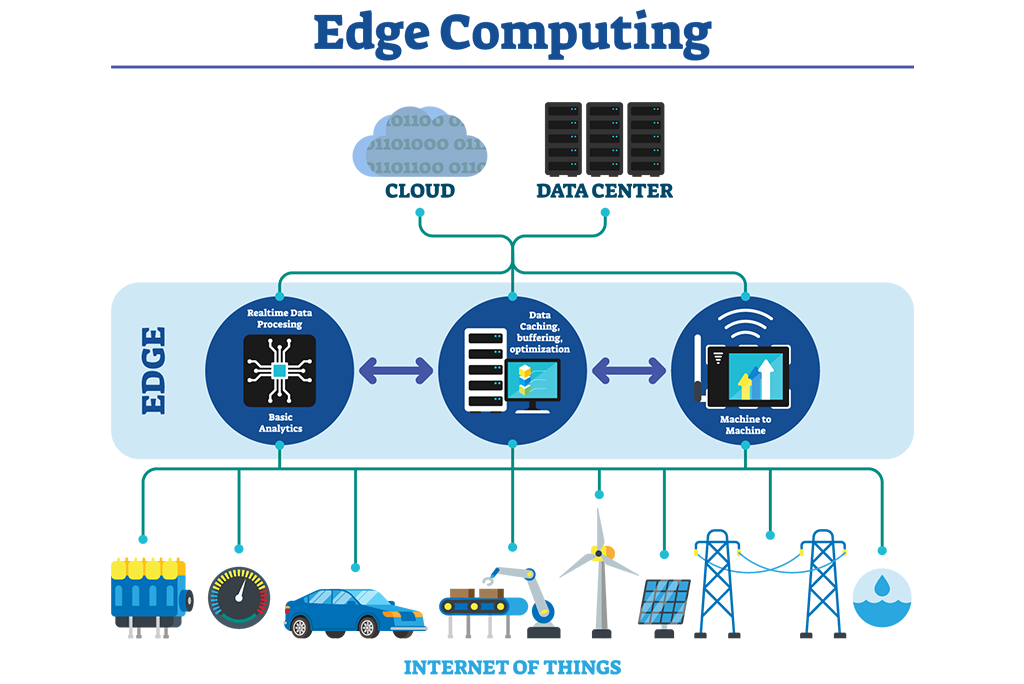The digital revolution has ushered in an era of unprecedented data generation. From the ubiquitous presence of the Internet of Things (IoT) to the ever-expanding realm of connected devices, information streams like gushing rivers, demanding innovative solutions for processing and analysis. This is where Edge Computing emerges as a transformative force, decentralizing computational power and bringing it closer to the “edge” of the network, where data originates.
What is Edge Computing?
Imagine a vast network, not unlike a bustling cityscape. In traditional computing, data from each building (representing devices) travels to a central power plant (the cloud) for processing. This, however, can lead to latencies, bottlenecks, and security concerns, especially with the deluge of data. Edge Computing flips the script, placing mini-data centers within individual buildings, enabling local processing and analysis. It’s like having mini power stations strategically distributed, optimizing efficiency and responsiveness.
Benefits of Edge Computing:
- Reduced Latency: Processing data on-site minimizes travel time, leading to real-time insights and faster decision-making, crucial for applications like autonomous vehicles and industrial automation.
- Enhanced Security: Sensitive data stays local, minimizing exposure to external threats and complying with privacy regulations.
- Improved Bandwidth Efficiency: Offloading processing from the cloud reduces network congestion and associated costs.
- Offline Functionality: Edge systems can operate even without internet connectivity, ensuring uninterrupted operations in remote or unreliable network environments.
Edge Computing in Action: Industry-Specific Solutions
Edge Computing transcends industries, offering tailored solutions for diverse needs:
Retail: Imagine smart shelves that automatically track inventory, predict demand, and optimize product placement based on real-time customer behavior analysis.
Manufacturing: Edge-powered sensors monitor equipment performance, enabling predictive maintenance and preventing costly downtime.
Healthcare: Wearable devices with edge computing capabilities can offer real-time health monitoring, early disease detection, and personalized treatment delivery.
Smart Cities: Traffic management systems leverage edge for real-time congestion analysis and dynamic route optimization, reducing traffic jams and improving urban mobility.
These are just a few examples, and the possibilities are endless.
Building the Edge: Hardware, Software, and Security
The Edge Computing ecosystem comprises several key components:
- Hardware: Ruggedized devices like gateways and microservers handle local processing and communication.
- Software: Edge platforms manage data acquisition, processing, and orchestration, ensuring seamless integration with cloud systems.
- Security: Robust security measures are crucial to protect sensitive data at the edge, requiring a multi-layered approach encompassing encryption, access control, and vulnerability management.
Challenges and Considerations
Embracing Edge Computing comes with its own set of challenges:
- Complexity: Managing a distributed network infrastructure can be complex, requiring expertise and robust management tools.
- Interoperability: Ensuring seamless communication and data exchange between edge devices, platforms, and cloud systems is crucial.
- Standardization: The lack of universal standards can create compatibility issues, hindering widespread adoption.
However, these challenges are actively being addressed through industry collaboration and the development of open-source solutions.
The Future of Edge Computing: A Collaborative Ecosystem
It is rapidly evolving, driven by advancements in artificial intelligence, 5G connectivity, and miniaturization technologies. We can expect:
- Increased Adoption: As benefits become more evident and solutions mature, wider adoption across industries is inevitable.
- Advanced Analytics: AI and machine learning will empower edge devices to perform complex analysis locally, unlocking deeper insights and real-time decision-making.
- Collaborative Edge: Interoperable platforms and standardized protocols will foster collaborative edge ecosystems, enabling data sharing and joint intelligence across organizations.
Frequently Asked Questions about Edge Computing Solutions
Navigating the world of It can raise many questions. Here are some of the most commonly asked ones, along with insightful answers to guide your understanding:
Edge solutions vary based on processing power, size, and capabilities. From small gateways for basic data collection to powerful microservers capable of advanced analytics, the choice depends on your specific needs and application.
No, Edge Computing and the cloud work in tandem. The cloud provides centralized storage, management, and large-scale analytics, while the edge handles real-time processing and local tasks. They complement each other for optimal performance and efficiency.
Security is paramount, and Edge solutions employ layered defenses like encryption, access control, and vulnerability management. However, careful selection of vendors and implementation of best practices are crucial for robust security.
Costs depend on factors like hardware choices, software licenses, and deployment complexity. While initial setup costs may be higher, long-term benefits like reduced latency, bandwidth savings, and improved efficiency can lead to significant cost reductions.
Consider your needs and challenges. If you require real-time insights, offline functionality, or data privacy, It could be a game-changer. Evaluate your specific use case and conduct feasibility studies to make an informed decision.
Conclusion
Edge Computing offers a dynamic solution for a data-driven world. As you explore its potential, remember, it’s a journey, not a destination. With careful planning, the right partners, and a clear understanding of your needs, you can unlock the power of the edge and create a smarter, more efficient future for your business.
Remember, this section can be added to the previous article to create a comprehensive and informative resource for anyone interested in Edge Computing Solutions.



